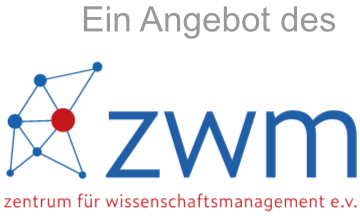Sie sind hier
Seit 2019 erscheint jedes Jahr der „Academic Freedom Index“. Der Index bildet über verschiedene Parameter Daten zur weltweiten Lage der Wissenschaftsfreiheit seit dem Jahr 1900 ab. Für einige Parameter gehen die Daten bis 1798 zurück, dem Beginn der Französischen Revolution.
Die aufwändige Erhebung ist ein Gemeinschaftsprojekt von Forschenden an der Friedrich-Alexander-Universität Erlangen-Nürnberg, dem V-Dem Institut der Universität Göteborg und dem Global Public Policy Institute in Berlin in enger Zusammenarbeit mit dem Scholars at Risk Network (SAR).
Die Kenngrößen bilden eine Vielzahl von Dimensionen der Wissenschaftsfreiheit ab. Jeder Parameter wird durch ein Intervall von 0 bis 1.000 beschrieben, wobei 1.000 der bestmögliche Wert ist. In der Interaktiven Grafik des Monats Januar 2022 setzen wir den Fokus auf fünf Aspekte, die sich folgenden Fragestellungen auseinandersetzen:
- Deliberative democray
Werden alle qualifizierten Teilnehmer:innen gleichermaßen in die Entscheidungsprozesse einbezogen?
- Egalitarian democracy
Inwiefern ist eine faire Ressourcenverteilung gewährleistet? Sind individuelle Freiheiten geschützt und ist ein gleicher Zugang zu Macht möglich?
- Electoral democracy
Wie fair erfolgt der Ablauf der Wahlen? Wie ausgeprägt sind freie Meinungsäußerungen im Wahlkampf und eine mediale Berichterstattung über alle Beteiligten möglich?
- Liberal democracy
Wie liberal ist das System? In welchem Ausmaß kann der Staat uneingeschränkt agieren?
- Participatory democracy
Wie stark kann sich die Bürgerschaft durch Volksentscheide o. ä. an politischen Entscheidungen beteiligen?
Ausführliche Erklärung der Parameter:
https://www.v-dem.net/vdemds.html
Deliberative democracy index
Question: To what extent is the ideal of deliberative democracy achieved?
Clarification: According to this principle, democracy requires more than an aggregation of existing preferences. There should also be respectful dialogue at all levels—from preference formation to final decision—among informed and competent participants who are open to persuasion.
Egalitarian democracy index
Question: To what extent is the ideal of egalitarian democracy achieved?
Clarification: Egalitarian democracy is achieved when 1 rights and freedoms of individuals are protected equally across all social groups; and 2 resources are distributed equally across all social groups; 3 groups and individuals enjoy equal access to power.
Electoral democracy index
Question: To what extent is the ideal of electoral democracy in its fullest sense achieved?
Clarification: Political and civil society organizations can operate freely; elections are clean and not marred by fraud or systematic irregularities; and elections affect the composition of the chief executive of the country. In between elections, there is freedom of expression and an independent media capable of presenting alternative views on matters of political relevance.
Liberal democracy index
Question: To what extent is the ideal of liberal democracy achieved?
Clarification: The liberal model takes a ”negative” view of political power insofar as it judges the quality of democracy by the limits placed on government. This is achieved by constitutionally protected civil liberties, strong rule of law, an independent judiciary, and effective checks and balances that, together, limit the exercise of executive power.
Participatory democracy index
Question: To what extent is the ideal of participatory democracy achieved?
Clarification: The participatory principle of democracy emphasizes active participation by citizens in all political processes, electoral and non-electoral. It is motivated by uneasiness about a bedrock practice of electoral democracy: delegating authority to representatives. Thus, direct rule by citizens is preferred, wherever practicable. This model of democracy thus takes suffrage for granted, emphasizing engagement in civil society organizations, direct democracy, and subnational elected bodies.
https://www.daad.de/de/der-daad/kommunikation-publikationen/presse/pressemitteilungen/academic-freedom-index/
- Bisher keine Ordner/Dateien vorhanden.
-
Keine Inhalte



Häufig zitierte Forschende weltweit - Highly Cited Researchers
Dr. Philipp AdlerDie Bedeutung der Hochschule für Startup-Gründungen
Dr. Philipp AdlerDoktorandin oder Doktorand – Wer ist schneller und von wem gibt es mehr?
Dr. Philipp Adler